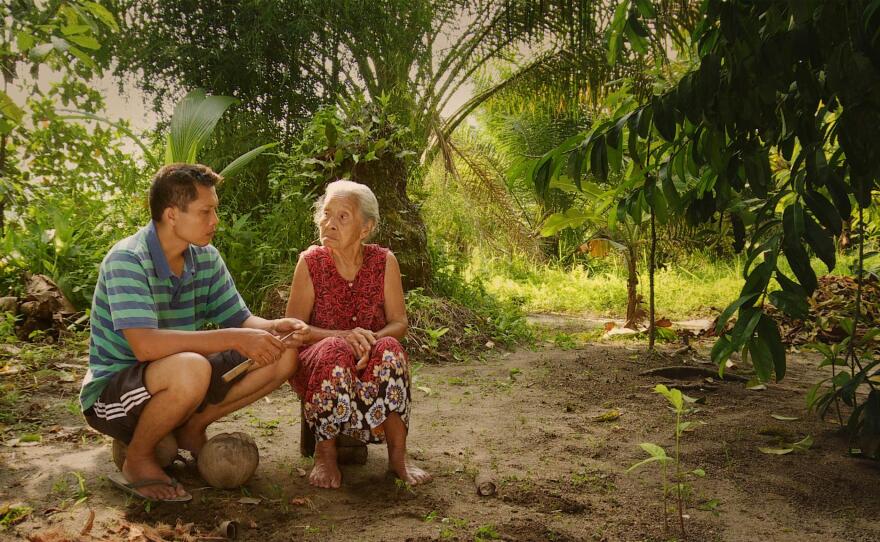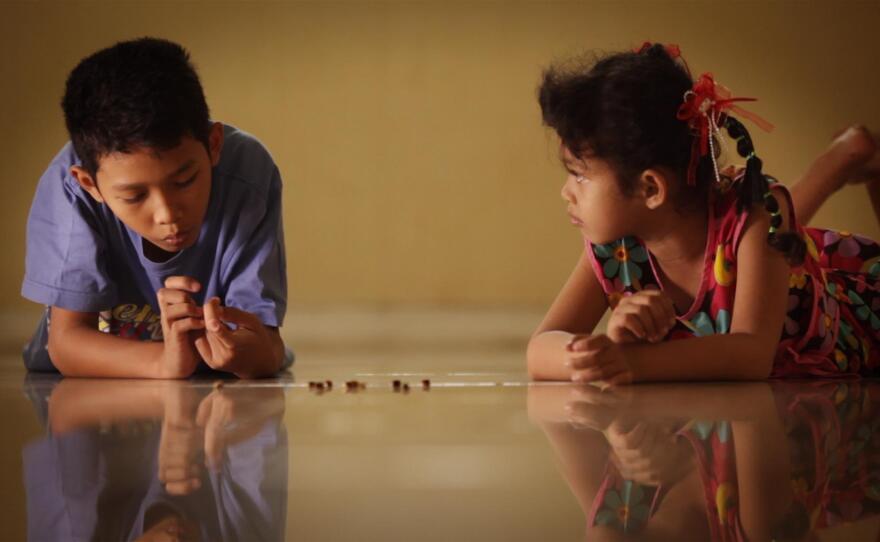Joshua Oppenheimer’s Oscar®-nominated “The Look Of Silence” tells the incredible story of a man who confronts his brother’s killers and demands they accept responsibility for their part in the Indonesian Suharto regime’s 1965 genocide, which claimed 1 million lives. The film has its national broadcast premiere on Monday, June 27, 2016, during the 29th season of the PBS documentary series POV. A companion piece to Oppenheimer’s 2013 film “The Act of Killing,” also nominated for an Oscar and presented on POV, “The Look Of Silence” has been hailed by critics and audiences around the world for bearing witness to the collapse of 50 years of state-sanctioned silence. The film is the winner of more than 70 international awards, including the Grand Jury Prize, FIPRESCI Award and Human Rights Film Network Award at the 2014 Venice Film Festival. Like its predecessor, it is executive-produced by Werner Herzog, Errol Morris and André Singer. The POV broadcast will also include a conversation between legendary filmmaker/screenwriter Herzog and Oppenheimer.




Film Review
“A … profoundly empathetic work of moral reckoning.”
— A.O. Scott, The New York Times
The documentary focuses on Adi Rukun, a determined yet mild-mannered optometrist from a family that survived the genocide. His older brother Ramli was murdered by Indonesian death squads unleashed against opponents of General Suharto, who came to power in 1965 by overthrowing President Sukarno and imprisoning, enslaving or murdering anybody associated with the Indonesian left, as well as the ethnic Chinese. Though initially this bloody dragnet allegedly targeted Communist Party members accused of destabilizing the country, it soon widened to include anyone likely to oppose the new government, including union members, intellectuals and women’s-rights activists. Many death squad leaders remain in power today—and some are Adi Rukun’s patients.
As “The Look Of Silence” illustrates, Ramli holds a special place in the genocide’s history. Unlike the hundreds of thousands of victims who simply disappeared at night from concentration camps, Ramli was murdered before outside witnesses. “Ramli was proof that the killings, no matter how taboo, had, in fact, occurred,” says Oppenheimer. “His death verified for villagers the horrors that the military regime threatened them into pretending had never occurred, yet threatened to unleash again.” Ramli was the human symbol of a vast crime against humanity.
The film is a study in contrasts: Rukun’s unflinching desire to confront his brother’s murderers and his insistence that they admit moral responsibility, and the killers’ celebratory attitude toward their heinous acts.An especially chilling display of pride occurs when two former death-squad members lead Oppenheimer to a clearing near North Sumatra’s Snake River where they helped the army kill 10,500 people. The tour begins as the killers blithely note that the local foliage smells “lovely, but subtle.”
There is no subtlety in their descriptions of what happened there. Victims were “paralyzed with fear. They had seen our machetes.” Many were beheaded, their corpses “bobbing up and down” in the river as they floated away. One man admits to stabbing Ramli repeatedly, pushing him into the water and then finishing him off with sexual mutilation. Women were not spared similar treatment. As the interview ends, the two men proudly pose for commemorative pictures, as if for a Facebook status update.
“The Look Of Silence” includes other confrontations with evil acts. Amir Siahaan, former commander of the Snake River death squads, not only has no regrets—”We exterminated communists for three months, day and night,” he boasts—but says, “We should be given a gift. We should be rewarded with a trip to America; if not by airplane, a cruise will do.”
While the brutality and callousness of the killers is nearly supernatural, Rukun’s bravery is also stunning. Many of the men he confronts remain in power and do not hesitate to threaten him, warning that speaking about the past is an invitation for the perpetrators to kill again.
“Maybe what you’re doing now is a secret communist activity,” one death-squad leader says. M.Y. Basrun, speaker of the regional local legislature since 1971, mixes menace with breathtaking audacity, insisting that if the victims’ families didn’t like him, he would never have been reelected so many times. “Do the victims’ families want the killings to happen again?” he asks. “No? Then change! If you keep making an issue of the past it will definitely happen again.” Fear of reprisals remains strong in many villages.
Rukun’s willingness to confront the killers has historical significance. “There has never been a nonfiction film, in the history of cinema, where survivors confront perpetrators who still hold a monopoly on power,” Oppenheimer says. By doing so, Rukun has broken through a 50-year reign of terror, intimidation and submission — and opened the door to the possibility of justice. Both of Oppenheimer’s films are at the center of an ongoing effort to convince the White House to declassify documents related to the genocide and to call on the government of Indonesia to appoint a commission to investigate the crimes and seek national reconciliation.
“Again and again, Adi Rukun says the unsayable, leaving the audience to feel what it is like to live as a survivor, and to perceive the contours of an oppressive silence born of fear,” says Oppenheimer. With “The Look Of Silence,” Rukun forces his countrymen’s murderers, and us, to reckon with the abyss of fear and guilt that forms when political violence is followed by impunity and silence. Oppenheimer’s film bears witness to this, and has broken the spell of submission and terror.
This is a production of Final Cut for Real ApS.
Past episodes of POV are available for online viewing. POV is on Facebook and Google +, and you can follow @povdocs.





